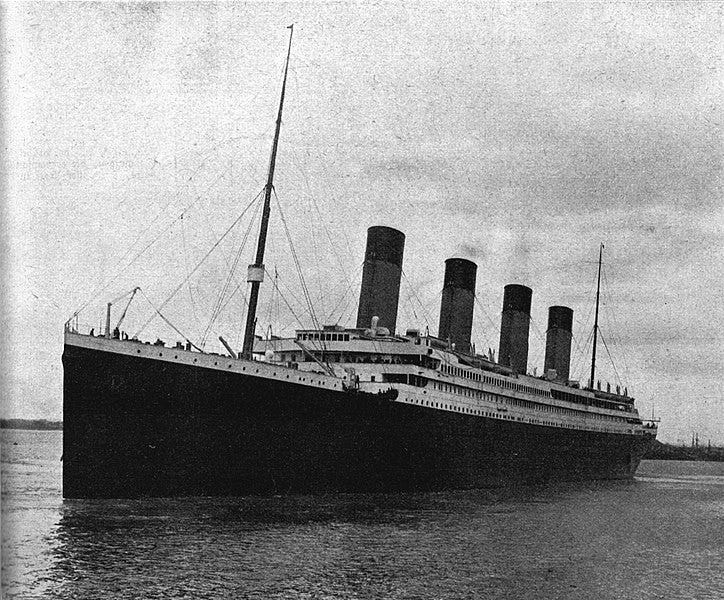Plus ça change, plus c'est la même chose.
The more things change, the more they stay the same.
One of the many headline events this week was news that the submersible Titan imploded while journeying to view the remains of the RMS Titanic.
The story of the luxury, “unsinkable” Titanic ocean liner is familiar. After striking an iceberg during her maiden voyage she sank in the early hours of April 15, 1912, off the coast of Newfoundland. Of the 2,240 passengers and crew on board, more than 1,500 perished in the icy waters of the North Atlantic. The incident has led to many well-known quotations and sayings, such as the following.
Rearranging the Deck Chairs on the Titanic
(This phrase has come to mean futile, symbolic action in the face of catastrophe. )Seize the moment. Remember all those women on the 'Titanic' who waved off the dessert cart.
Erma BombeckI have seen but one vessel in distress in all my years at sea. I never saw a wreck and never have been wrecked nor was I ever in any predicament that threatened to end in disaster of any sort.
E.J. Smith, 1850-1912, Captain of the TitanicUntil the moment she actually sinks, the Titanic is unsinkable.
Julia Hughes
I don’t know if the loss of the Titan will generate any enduring quotations. But already we can see one important similarity between the two sinkings. In his paper The Titanic Disaster: An Enduring Example of Money Management vs. Risk Management, Brander states,
Most of the discussion of the accident revolves around specific problems. There was the lack of sufficient lifeboats (enough for at most 1200 on a ship carrying 2200). There was the steaming ahead at full-speed despite various warnings about the ice-field. There was the lack of binoculars for the lookout. There were the poor procedures with the new invention, the wireless (not all warnings sent to the ship reached the bridge, and a nearby ship, the operator abed, missed Titanic's SOS). Very recently, from recovered wreckage, "Popular Science" claimed the hull was particularly brittle even for the metallurgy of the time. (A claim now debunked.) Each has at one time or another been put forward as "THE reason the Titanic sank".
What gets far less comment is that most of the problems all came from a larger, systemic problem: the owners and operators of steamships had for five decades taken larger and larger risks to save money - risks to which they had methodically blinded themselves. The Titanic disaster suddenly ripped away the blindfolds and changed dozens of attitudes, practices, and standards almost literally overnight.
This insight is reflected in our Warning Flags series.
There is one feature that is common to both accidents — designers did not follow good engineering practices. For example, the designers of the Titanic did away with safety features such as full height bulkheads so as to make it easier for passengers and waiters to move around the ship. Had such bulkheads been in place, it is likely that the vessel would not have sunk.
We do not yet have any formal reports as to why the Titan imploded. However, there are early suggestions that the designers did not follow appropriate engineering rules and standards. If that is the case, then the Titan and the Titanic share a common reason for their fates in that part of the Atlantic Ocean.






